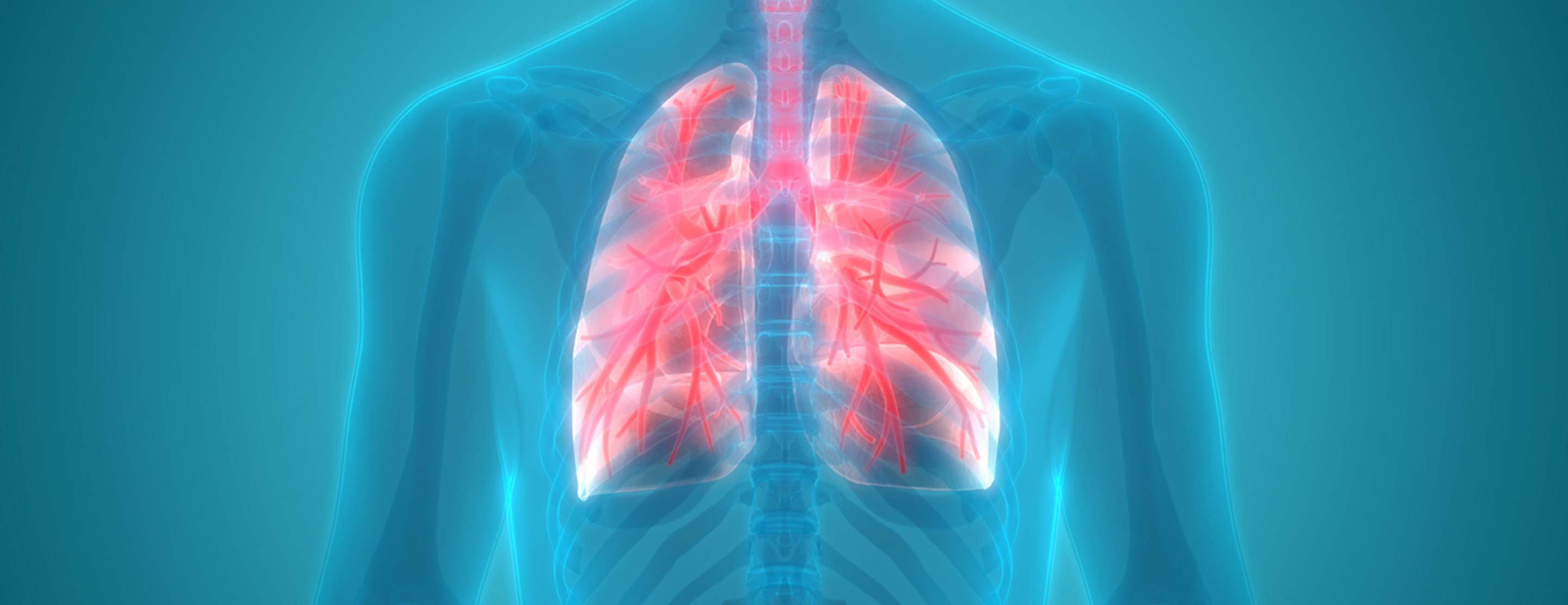
Lung needle biopsy
Definition
A lung needle biopsy is a method to remove a piece of lung tissue for examination. If it is done through the wall of your chest, it is called a transthoracic lung biopsy.
Alternative Names
Transthoracic needle aspiration; Percutaneous needle aspiration
How the Test is Performed
The procedure usually takes 30 to 60 minutes. The biopsy is done in the following way:
- A
chest x-ray orchest CT scan may be used to find the exact spot for the biopsy. If the biopsy is done using a CT scan, you may be lying down during the exam. - You may be given a sedative to relax you.
- You sit with your arms resting forward on a table. Your skin where the biopsy needle is inserted is scrubbed.
- A local painkilling medicine (anesthetic) is injected.
- The doctor makes a small cut in your skin.
- The biopsy needle is inserted into the abnormal tissue,
tumor , or lung tissue. A small piece of tissue is removed with the needle. - The needle is removed. Pressure is placed on the site. Once bleeding has stopped, a bandage is applied.
- A chest x-ray is taken right after the biopsy.
- The biopsy sample is sent to the lab. Analysis usually takes a few days.
How to Prepare for the Test
You should not eat for 6 to 12 hours before the test. Follow instructions about not taking nonsteroidal anti-inflammatory drugs (NSAIDs) such as aspirin, ibuprofen, or blood thinners such as warfarin for a period of time before the procedure. Check with your health care provider before changing or stopping any medicines.
Before a needle biopsy of the lung, a chest x-ray or chest CT scan may be performed.
How the Test will Feel
You will receive an injection of anesthetic before the biopsy. This injection will sting for a moment. You will feel pressure and a brief, sharp pain when the biopsy needle touches the lung.
Why the Test is Performed
A lung needle biopsy is done when there is an abnormal condition near the surface of the lung, in the lung itself, or on the chest wall. Most often, it is done to rule out cancer. The biopsy is usually done after abnormalities appear on a chest x-ray or CT scan.
Normal Results
In a normal test, the tissues are normal and there is no cancer or growth of bacteria, viruses, or fungi if a culture is performed.
What Abnormal Results Mean
An abnormal result may be due to any of the following:
- Bacterial, viral, or fungal lung infection
- Cancerous cells (
lung cancer , mesothelioma) Pneumonia
Risks
Sometimes, a collapsed lung (
In rare cases, pneumothorax can be life threatening if air escapes from the lung, gets trapped in the chest, and presses on the rest of your lungs or heart.
Whenever a biopsy is done, there is a risk of too much bleeding (hemorrhage). Some bleeding is common, and a provider will monitor the amount of bleeding. In rare cases, major and life-threatening bleeding can occur.
A needle biopsy should not be performed if other tests show that you have:
- Bleeding disorder of any type
- Bullae (enlarged alveoli that occur with emphysema)
Cor pulmonale (condition that causes the right side of the heart to fail)Cysts of the lungHigh blood pressure in the lung arteries - Severe
hypoxia (low oxygen)
Considerations
Signs of a collapsed lung include:
Blueness of the skin - Chest pain
Rapid heart rate (rapid pulse)Shortness of breath
If any of these occur, call your provider right away.
References
Given MF, Corr A, Thomson KR, Lyon SM. Percutaneous biopsy of the lung, mediastinum, and pleura. In: Mauro MA, Murphy KPJ, Thomson KR, Venbrux AC, Morgan RA, eds. Image-Guided Interventions. 2nd ed. Philadelphia, PA: Elsevier Saunders; 2014:chap 152.
Klein JS, Bhave AD. Thoracic radiology: invasive diagnostic imaging and image-guided interventions. In: Broaddus VC, Mason RJ, Ernst JD, et al, eds. Murray and Nadel's Textbook of Respiratory Medicine. 6th ed. Philadelphia, PA: Elsevier Saunders; 2016:chap 19.
Review Date: 07/20/2018
The information provided herein should not be used during any medical emergency or for the diagnosis or treatment of any medical condition. A licensed physician should be consulted for diagnosis and treatment of any and all medical conditions. Call 911 for all medical emergencies. Links to other sites are provided for information only -- they do not constitute endorsements of those other sites. Copyright ©2019 A.D.A.M., Inc., as modified by University of California San Francisco. Any duplication or distribution of the information contained herein is strictly prohibited.
Information developed by A.D.A.M., Inc. regarding tests and test results may not directly correspond with information provided by UCSF Health. Please discuss with your doctor any questions or concerns you may have.





